ChatGPT: how to use it for research to write articles, presentations and studies


ChatGPT is often considered a tool that will replace human labor for tasks such as writing student or professional content. But ChatGPT can also be used to assist this human work, and research is a great example of this.
Whether it’s a research for school or a market study for your job, initiating the process of seeking information and finding the right sources can be a challenge and take a lot of time.
ChatGPT and other AI chatbots can help you by reducing the time spent finding sources, which allows you to switch more quickly to the actual reading and research of your work.
Choosing the right chatbot
Before starting, it is important to understand the limitations of using ChatGPT. As ChatGPT is not connected to the Internet, it will not be able to give you access to information or resources after 2021, nor will it be able to provide you with a direct link to the source of the information.
The ability to ask a chatbot to provide you with links on the topic that interests you is very valuable. If you want to do this, I recommend using a chatbot connected to the internet, such as Bing Chat, Claude, ChatGPT Plus or Perplexity.
This practical guide uses ChatGPT as an example of how to use guide messages, but the principles are the same regardless of the chosen chatbot.
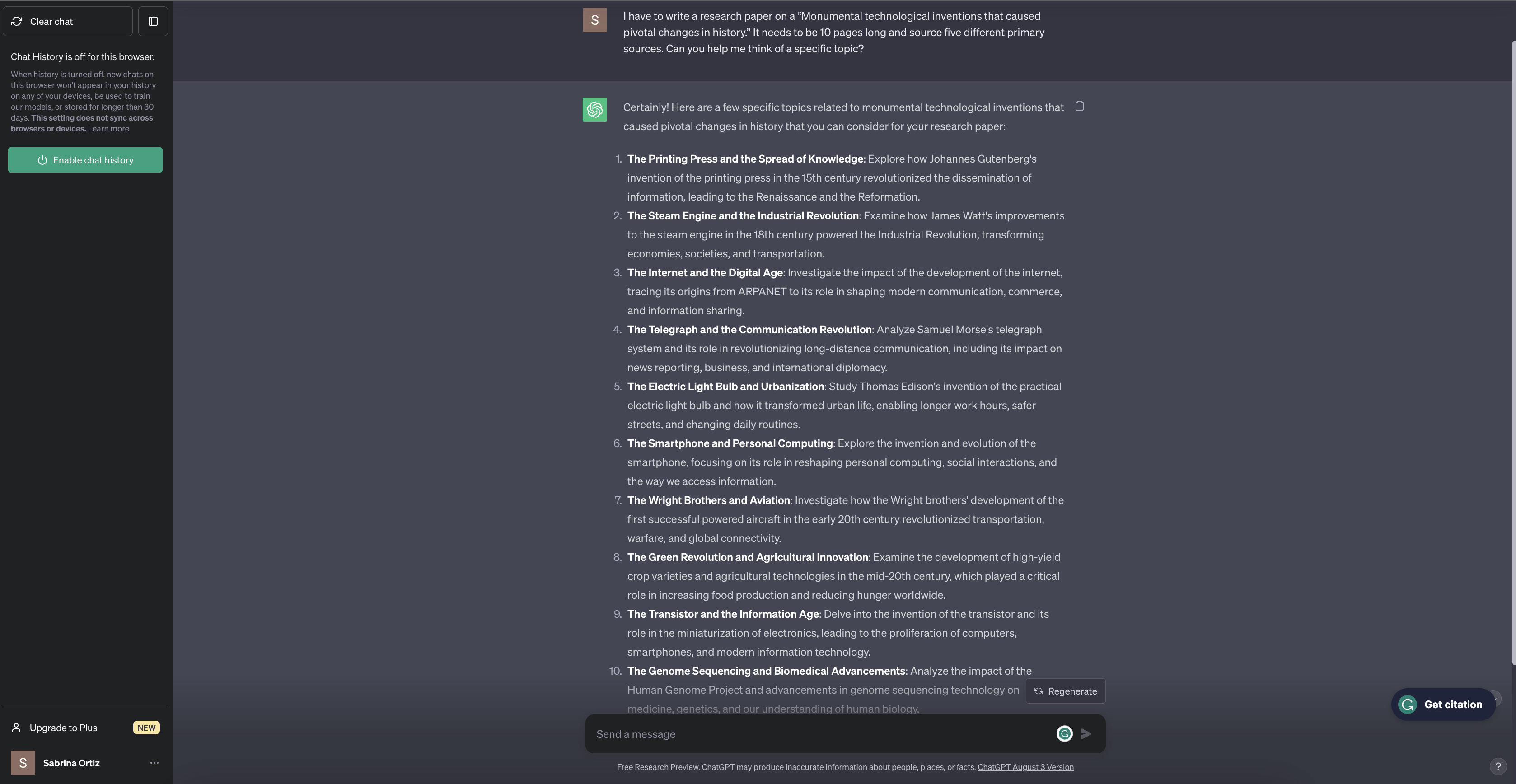
Screenshot by Sabrina Ortiz/ZDNET
The brainstorming step
When you are entrusted with a research assignment, you often have to draw from the general subject a particular aspect or an exact angle to be treated in more depth. ChatGPT can help you in the brainstorming process by suggesting ideas or even modifying your own.
For this example of a research thesis, I will use the general topic “Important technological inventions that caused decisive changes in history”. If I didn’t have a specific idea to write about, I would tell ChatGPT the general theme of the work in as much detail as possible and ask him to make proposals to me.
My request (“prompt” given to the chatbot): I have to write a research thesis on “Major technological inventions that have caused decisive changes in history”. It should be ten pages long and based on five different primary sources. Can you help me find a specific topic?
As shown in the screenshot (below), ChatGPT has produced 10 viable topics, including “The written press and the dissemination of knowledge”, “The Internet and the digital age”, “The telegraph and the communication revolution”, and many more.
You can then follow up with ChatGPT to request additional information. You can even modify these topics by giving them an angle that you like more, and continue the feedback loop until you have a topic that suits you.
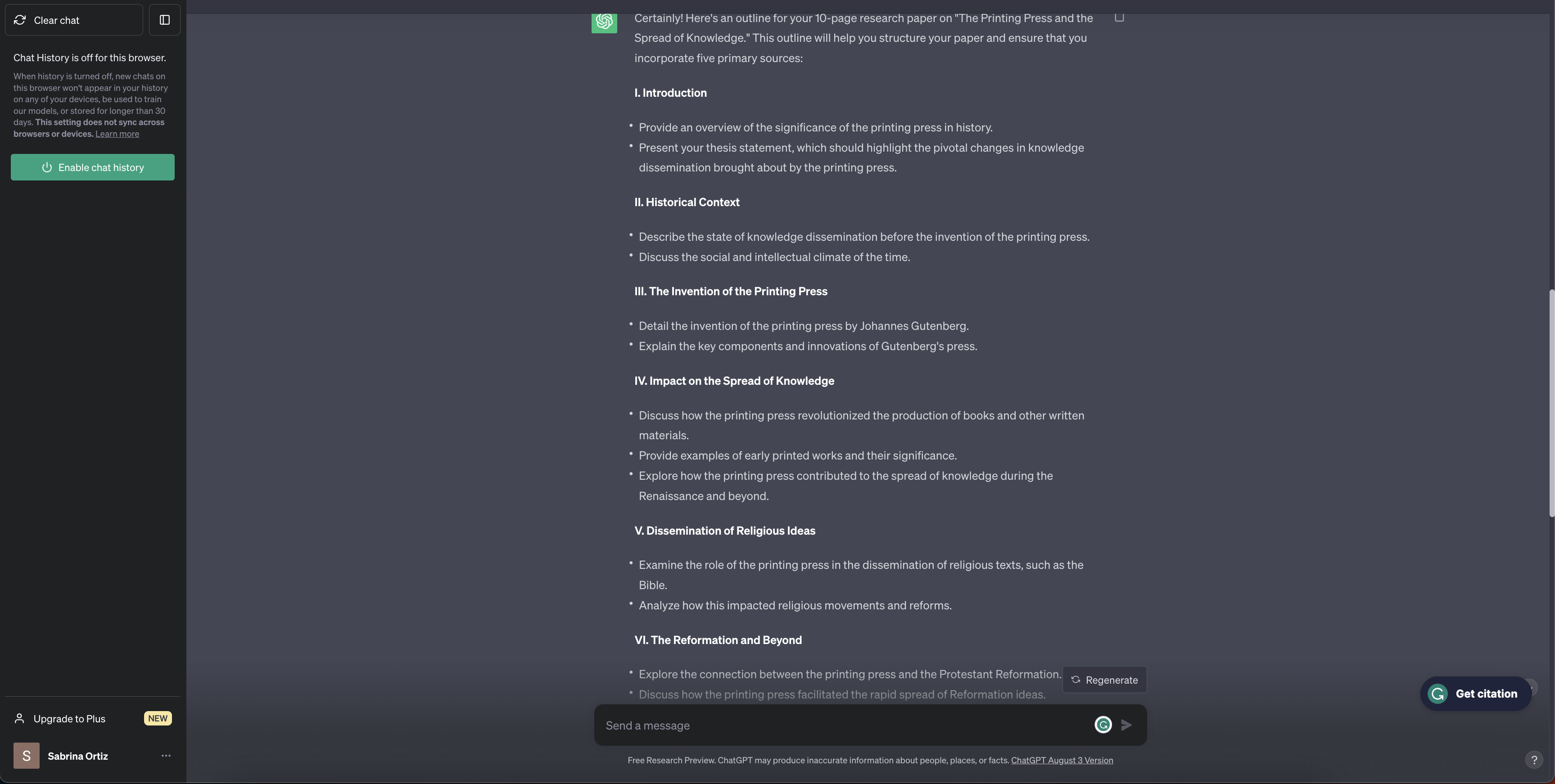
Screenshot by Sabrina Ortiz/ZDNET
Generate a plan
Once you have selected an angle, you can ask ChatGPT to generate a plan, including as many details as possible. For this example, I used the first topic suggested by ChatGPT in the previous step.
My request: Can you give me the outline of a ten-page research paper that must use five primary sources on the subject of “Printing and the dissemination of knowledge”?
ChatGPT generated a 13-point plan that carefully outlined the areas I needed to address in my document, as shown in the screenshot (above). You can then use this outline to structure your text and use the points to find sources, using ChatGPT as shown below.
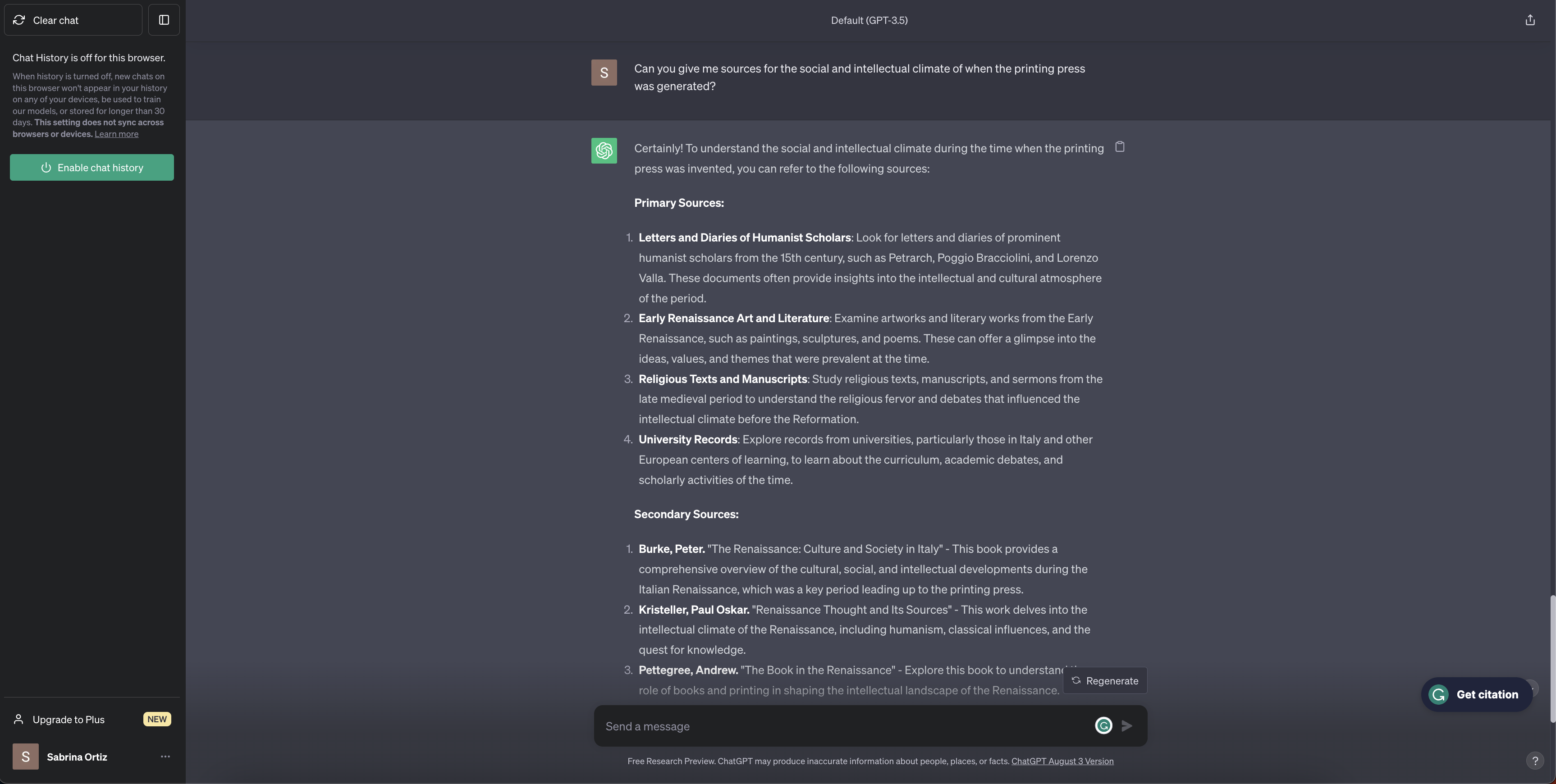
Screenshot by Sabrina Ortiz/ZDNET
Tell ChatGPT your topic and ask for sources
Now that you have established a topic and a plan, you can ask ChatGPT about the topic of your project and ask it to provide you with sources.
My request: Can you give me sources for a ten-page article on this topic, “The written press and the dissemination of knowledge”?
ChatGPT provides a list of five primary sources and five secondary sources that you can include in your article. Remember that ChatGPT cannot give you internet links, so you will have to search for the specific resources on your own, either by using Google or by going to your school library.
When I asked Bing Chat the same question, he provided me with sources with clickable links that you can use to access the material you need faster. That’s why I would use Bing Chat for this step.
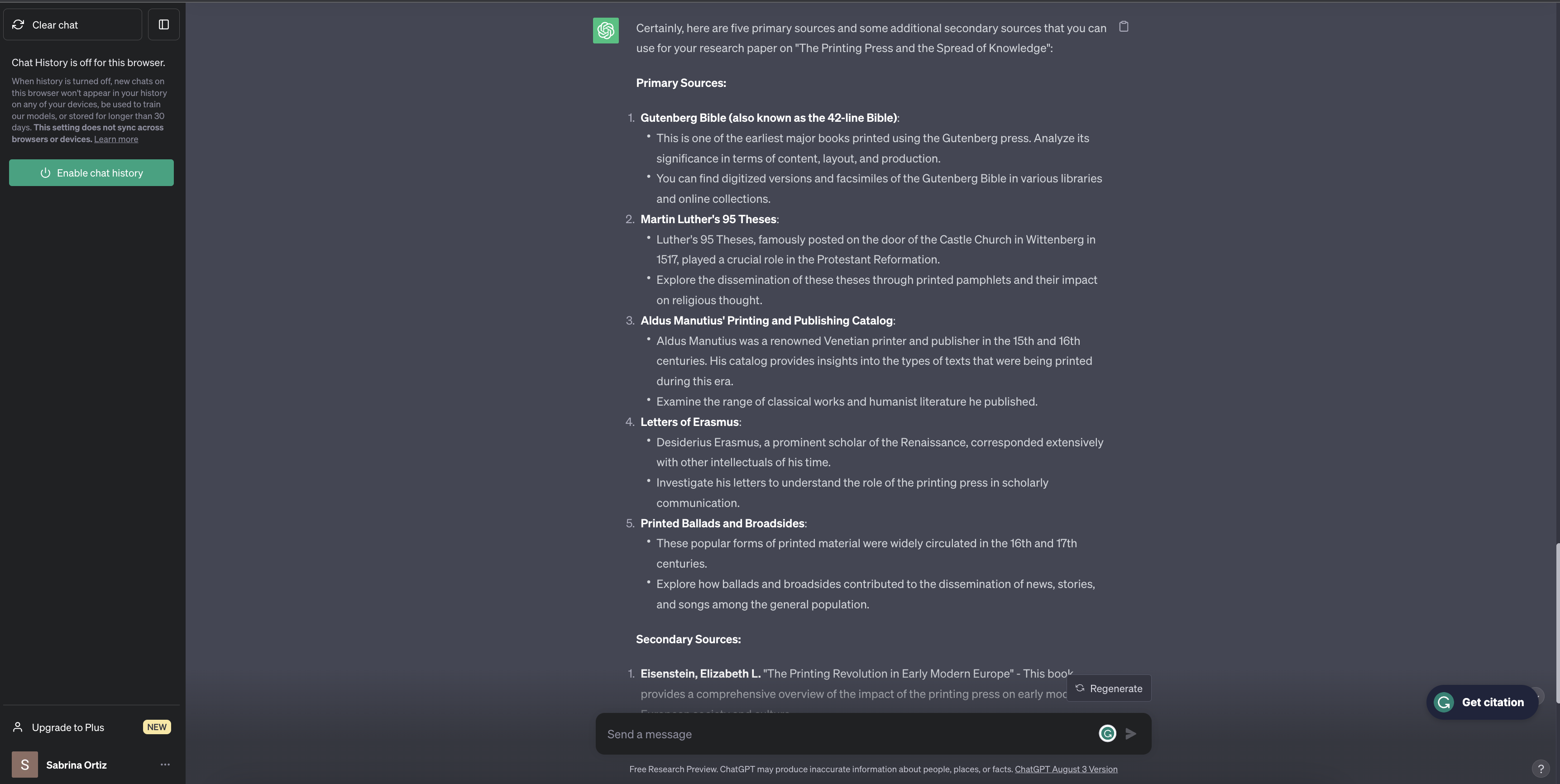
Screenshot by Sabrina Ortiz/ZDNET
Describe a specific idea and ask for sources
Instead of describing the whole topic, you can also use a chatbot to find sources on a specific aspect of your article.
For example, I asked ChatGPT for sources for a specific point in the outline of the article he generated above.
My request: Can you give me sources on the social and intellectual climate of the time when the printing press was created?
As in the previous example, ChatGPT generated five primary resources and five secondary resources for the topic.
Using this function for smaller parts of your essay is a good alternative because it gives you more options about sources and provides you with personalized information that you can use to carefully write your paper.
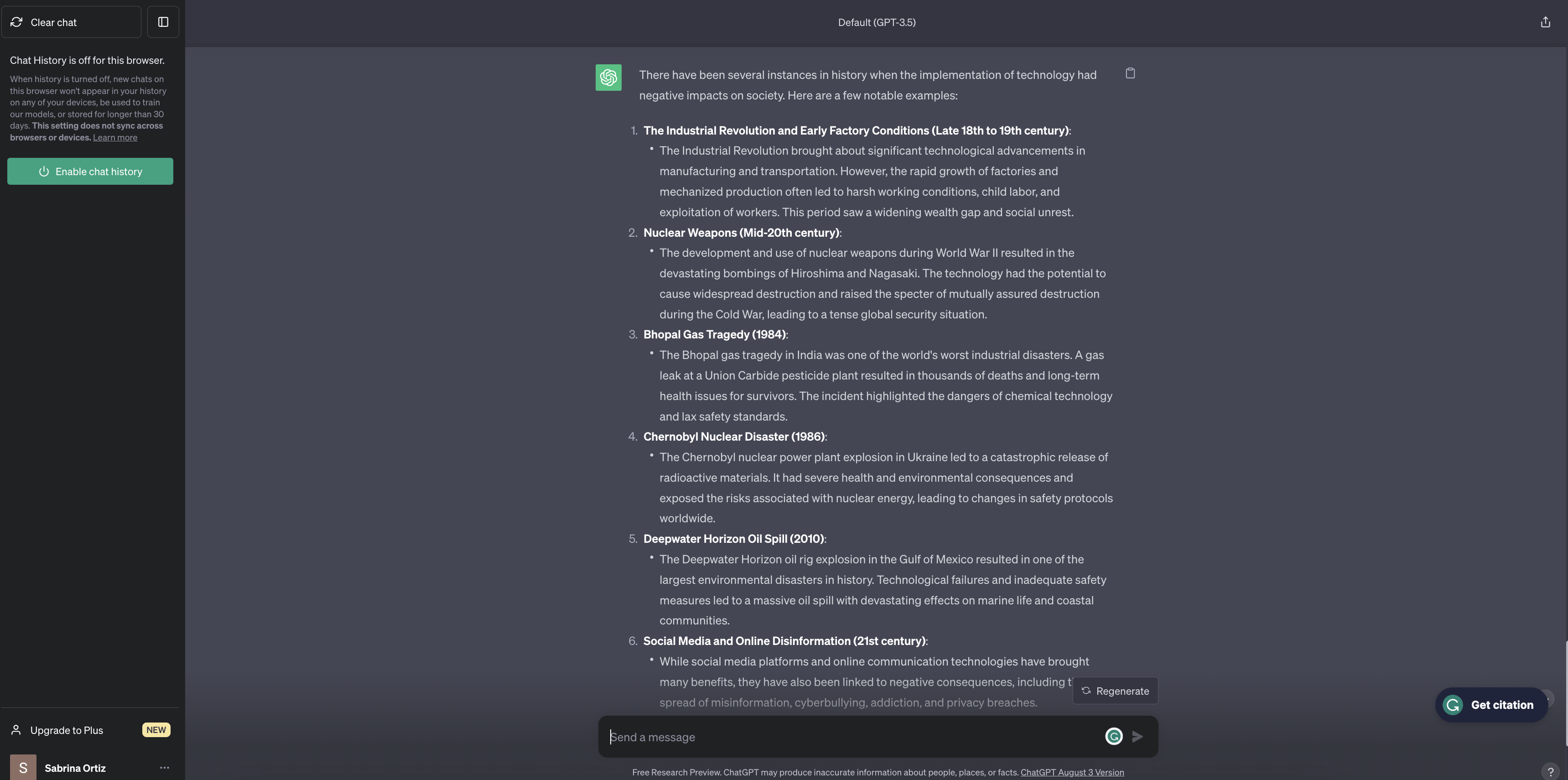
Screenshot by Sabrina Ortiz/ZDNET
Ask for examples of specific consequences
I often use this question in my work, because sometimes I remember a particular incidence, but without being able to specify the nature or the date.
This tool can also be used when you need to find a specific example to support your topic.
In both cases, you can ask ChatGPT to help you identify a specific event or period, and incorporate these details into your article.
In our sample essay, if I wanted to include a rebuttal and delineate a moment when the implementation of the technology had negative impacts, but I couldn’t find them, then I could ask ChatGPT to help me identify one.
My query: What is the moment in history when the use of technology turned against society and had negative consequences?
In a few seconds, ChatGPT generated 10 examples of harmful impacts that I was able to integrate into the research as a rebuttal.
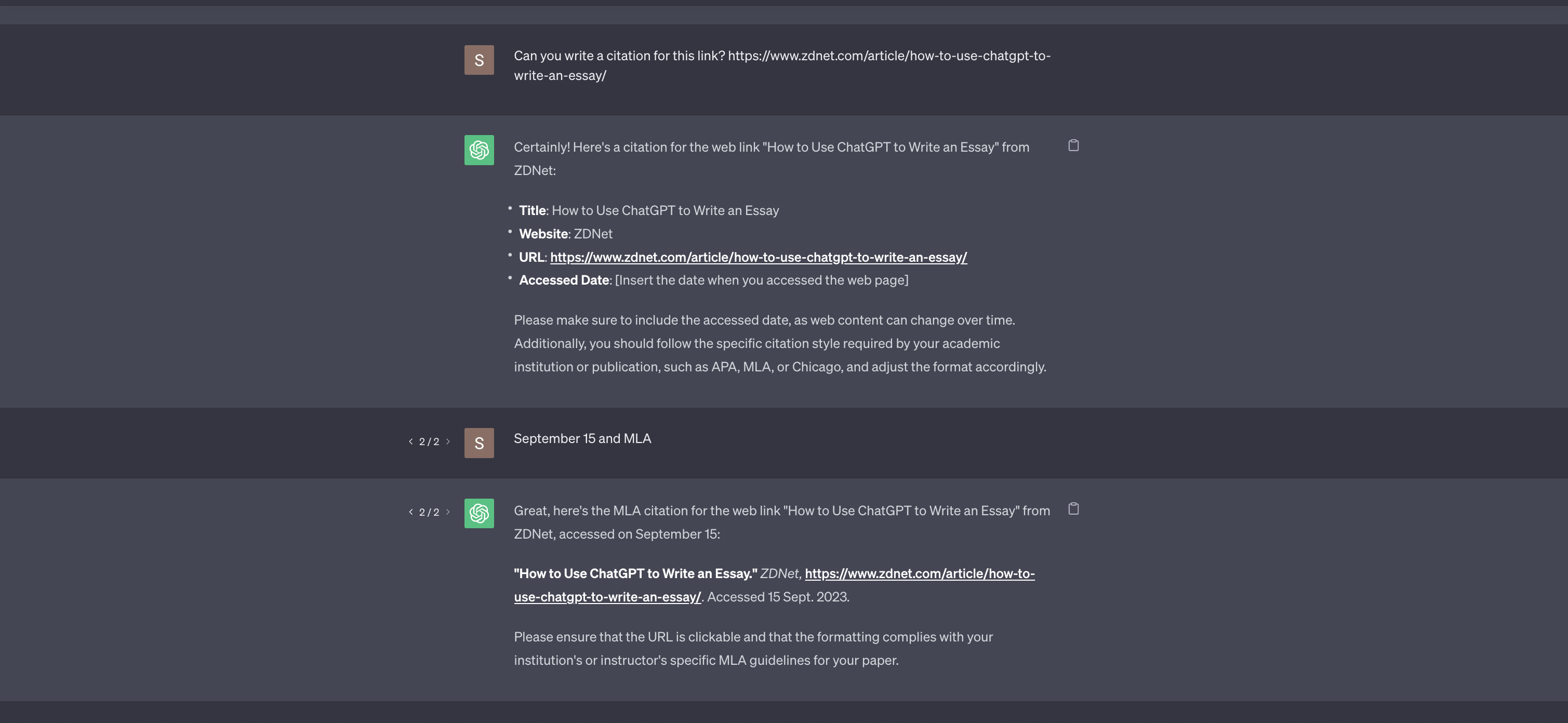
Screenshot by Sabrina Ortiz/ZDNET
Generate quotes
Creating a page of the works you have cited, although valuable and necessary for integrity, is a chore. From now on, you can ask ChatGPT to generate citations for you by simply indicating the link or the title of the work and respecting the academic style (for example MLA) requested for your text.
Source: “ZDNet.com “








